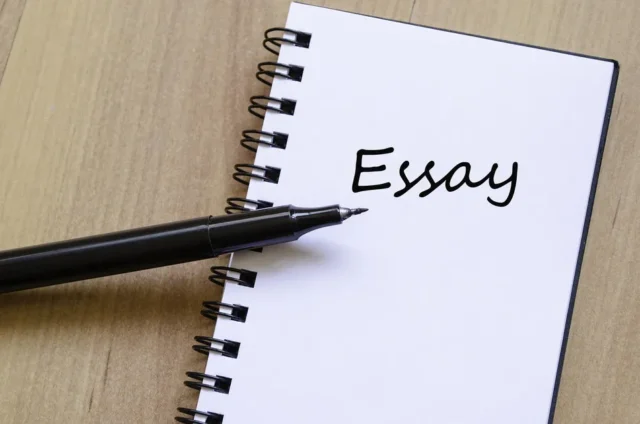
Academic essays are pieces of writing that develop into an argument or idea using analysis, evidence, and interpretation. As a college student, you’re going to be asked to write numerous essays, and there are several types. The length and content of your essay may also vary based on your level, course requirement and subject of study. However, the most common type of essay written in colleges is the argumentative essay. The goal is for the student to persuade the lecturer or reader about their perspective or position on a topic.
Although many students struggle to write their essays by themselves for many reasons, and they end up outsourcing it to professional writing platforms such as essaywritinglab.co.uk, some others are willing to take on this task. If you’re part of the latter group, you must learn how to write an essay excellently to get high grades. Outsourcing their essays to professional writers guarantees others high grades. You should be able to give yourself the same guarantees.
Hence, this article provides a step-by-step guide to help you write an essay.
Three stages of essay writing
There are three main stages involved in writing an essay:
- Preparation: at this stage, you choose a topic, carry out extensive research about the topic and create an outline for your essay.
- Writing: this is the part of the process where you set your argument out from the introduction to developing it with facts and evidence in the body and end with a conclusion.
- Revision: this is the final stage where you format the essay and go through the content, organization and structure. You also proofread and check for grammatical and spelling errors before submitting.
How to write an essay
1. Preparation

Determine the type of essay you’re writing
There are different types of essays: narrative, argumentative, expository, persuasive, literary, and comparative essays. So the first step is determining the type of essay you’re asked to write.
- A narrative essay tells a story or presents an overview of the topic.
- An expository essay provides an analysis of the topic.
- A persuasive essay requires you to convince the reader about your point of view and persuade them to adopt it.
- A literary essay is writing about a book you have read.
Create an essay outline
Your essay outline is the road map for your essay. It guides you through your points. In creating an outline, you have to organize your thoughts about the topic first. Start by writing the topic at the top of the page and listing the arguments or points you’re making about the essay. Include facts, statistics, and examples to support each point.
Create a thesis statement
Your thesis statement has to inform the readers what the main point of the topic is or the question you’re looking to answer with the topic. This makes it a prelude to your conclusion. The thesis statement is very specific and addresses one main idea. A strong thesis illustrates the controversial nature and takes a stand.
2. Writing

Introduce the topic
The first paragraph of the essay is the introductory paragraph. It introduces the topic to the reader and provides direction for the essay. Your introduction should discuss the essay’s main idea, then state your thesis and the arguments or points to support your thesis.
This paragraph also sets the tone for the essay, so you must use it to grab the reader’s attention. To do this, you have to make a surprising but factual claim. Say something that challenges the reader’s thoughts and makes them want to read the essay to the end.
Write the essay body
The main part of the essay provides more details about the points mentioned in the introductory paragraph supporting your thesis statement. Take the points mentioned in your introduction and discuss them in separate paragraphs. Start with a topic sentence summarizing the point and explain to the readers why you think it is true. Make sure to support each point with evidence that makes them believable such as examples, statistics, quotes, and facts.
Write your conclusion
The last part of your essay is the concluding paragraph. This ends the essay and ensures the readers get closure. The conclusion should be between three to four concise sentences reiterating your thesis statement and the main points of your essay’s body. However, you must ensure that you aren’t using the same words as you did in the previous parts of the essay. The conclusion shouldn’t contain any new information not mentioned in the article. Instead, it should uphold the article’s main idea compellingly.
3. Revision

Edit your essay
After writing your essay, you can take a few hours or days off it before coming back to reread and edit it. Taking some time out allows you to be fresher when reading it again, and you can spot grammar and spelling errors. There are also several grammar tools that you can use, such as Grammarly, to find errors in the essay and correct them. The goal is to make sure you’re submitting an error-free essay.
Proofread the essay
You may not be able to proofread your essay because you write effectively. It may be hard to pick out your errors. However, it might help if you read it out to your friends and family or have them proofread it for you. The fresh eyes mean they can see mistakes that you don’t see, and it also allows them to add new perspectives to improve the essay. This is how you ensure the quality of your essay.
Conclusion
Remember to take things one step at a time when writing your essay. If you’re struggling to start your essay, it may help you work backward from the conclusion. This is a technique that people use, and it has proven effective. Start your essays by making a rough draft which you then try to improve on and perfect till you get to your final draft. Don’t forget to revise and proofread your work before submitting it.












